Integrated pumps in dehumidifiers are modern technology appliances used to eliminate excessive moisture content in the room air to control humidity at required levels. The devices work best where condensation accumulates, like water seepage-prone places, laundries, and poorly ventilated rooms. A dehumidifier with these attributes adds further value as it automatically discharges collected water, which means the appliance can continuously run without being manually emptied. This article will investigate the processes involved in pump dehumidifiers, clarifying their operation method and the device’s internal workings and analyzing the conditions and environments where this device would be most beneficial.
What is a dehumidifier with pump and how does it work?
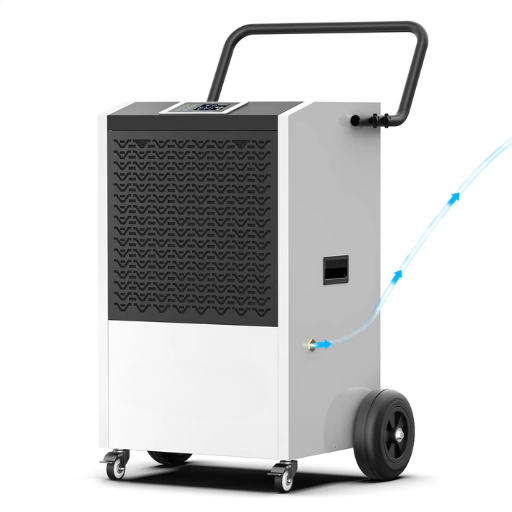
A dehumidifier with a pump is an appliance intended to extract moisture from the air whilst also containing an automatic pumping system that removes the accumulated water. The dehumidifier works by taking in air with moisture and blowing it over refrigerated coils where the moisture converts and condenses into water droplets. These droplets are stored in an internal collection tank. The built in pump inside the device then pumps the water outside of the device through the drainage hose and this allows the unit to operate constantly without the need for human intervention. This is very useful in situations where water cannot drain using gravity.
Understanding the major concepts of dehumidifiers
Dehumidifiers operate using condensation and air circulation strategies. A fan collects moist air and pushes it over evaporator coils, which are cooled to temperatures below the air’s dew point. This causes the water vapor in the air to condense into a liquid, which is then disposed of. The air is first warmed, and then dry air is pushed back into the environment, which is also reheated with condenser coils.
- Humidity Removal Capacity: This is expressed in pints per day (PPD), indicating the maximum moisture value a unit can expect to extract, which usually falls between 20 and 70 PPD for domestic models.
- Energy Efficiency: The number represents the unit’s Energy Factor (EF) in liters per kilowatt-hour (L/kWh). The value indicates how well the unit converts electrical energy into moisture removal. Greater values indicate better efficiency.
- Operating Temperature Range: This defines the temperature limits within which the dehumidifier operates. Models with refrigerant are more efficient for temperatures over 41°F (5°C) to avoid frost buildup on the coils.
- Airflow Rate: This is given in cubic feet per minute (CFM), which specifies the rate of air circulation by the fan. Higher airflow allows for faster dehumidification, especially in bigger areas.
- Reservoir and Pump Capacity (applies for models with pumps): Specifications of the reservoir volume and the height (generally 15 feet) from which the pump can lift water for efficient drainage.
Function of the integrated pump in dehumidifiers
Most dehumidifiers make use of a built-in pump to facilitate automatic water drainage. This is especially useful for continuous operation in areas such as basements, crawlspaces, or places without easy access to a floor drain. A built-in pump permits water to be expelled vertically or greater distances, removing the need for manual reservoir emptying. This feature ensures that the dehumidifier would reflect consistent functionality and minimal interruptions.
Management of condensate in dehumidifiers with pumps
Pump-equipped dehumidifiers store condensate in internal reservoirs, which are later drained via attached hoses. Once the internal reservoir is full, the built-in pump is activated to expel the collected condensate. The built-in pump is designed to ensure that the internal reservoir can be drained either vertically or across horizontal distances, which permits efficient removal and uninterrupted operation of the device.
What are the advantages of using a dehumidifier with a built-in pump?
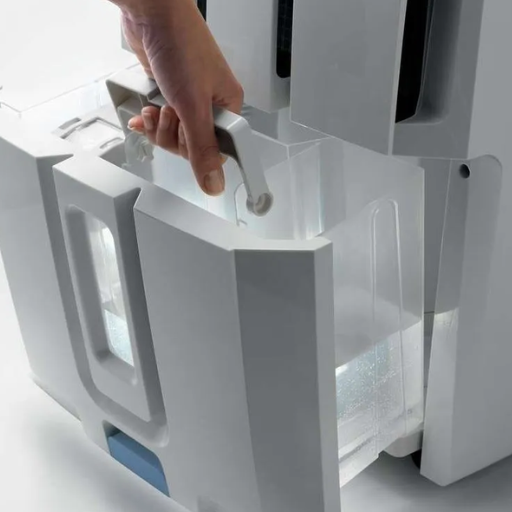
A dehumidifier with a built-in pump can be very beneficial. These devices help when there is a need for a constant drainage system. They can assist in places such as basements or crawl spaces where water needs to be pumped out vertically or through long distances. Having a built-in pump makes the dehumidifiers easier to operate. Burnout and water overflow are avoided whilst also saving time by not having to remove the water reservoir manually. All of these advanced capabilities make this product extremely reliable and easy to use in the long term.
Convenience of automatic water removal
Being able to automatically remove water without having to expel it allows for easier moisture ventilation. This makes it easier to maintain and keep the room devoid of humidity. Not needing to take care of a reservoir makes it ideal if the dehumidifier is being used in places that are hard to reach such as basements.
Enhanced effectiveness in controlling excessive humidity
The availability of a dehumidifier with a built-in pump improves the effectiveness of controlling excessive moisture within a room. The built in pump allows for streamlined functioning without the interruption of emptying the reservoir before the appliance getting switched off due to overflow. Some critical technical indicators enhance their effectiveness. These parameters include PPD or dehumidification capacity, the amount of moisture a unit can remove in a day, and airflow rates, often given in CFM. Adjustable humidity settings are also made available in several new models to allow finer settings, usually between 30 and 50 percent relative humidity. Besides that, built-in pumps offer vertical drainage up to 15ft, which guarantees a consistent understanding of water if the drain outlets are placed high. Collectively, these characteristics make them exceptionally dependable for getting rid of excessive moisture, controlling dampness and preventing mold growth, and ensuring enhanced indoor air quality.
Where are dehumidifiers with pumps most effectively used?

Dehumidifiers with pumps are most efficiently used in basements, crawl spaces and other areas with high moisture levels. Such areas often have insufficient ventilation and thus, are subjected to dampness, mold, and mildew. They are also great in settings where there is high waste water, like laundry facilities, or in construction areas that need constant water removal and low manual intervention. These dehumidifiers monitor humidity levels and hence can, to some extent, protect building structures and stored items and improve overall air quality in these difficult spaces.
Ideal applicatons in basements and crawl spaces
With their ability to continuously extract water, dehumidifiers with pumps are particularly suited for basements and crawl spaces because these areas epitomize high moisture levels, have poor ventilation, and, indeed, are great for mold growth. Moreover, they protect a building from structural damage and pests. The built-in pumps are also great for places like basements and crawl spaces, which are difficult to access because they ensure efficient drainage, even when it is gravity-assisted.
Benefits for attics and other hard-to-reach areas
Pumped dehumidifiers help regulate moisture in attics and other areas that are not easily accessible. These places are usually prone to low airflow, which can lead to humidity levels that encourage mold growth, wood rotting, and insulation damage. With the pump, water can be directed to a drainage point that is at a higher elevation, so there is no need to frequently empty it out manually. With precise humidity control, these areas help ensure that stored items do not decay, air quality remains unpolluted, and the building is not damaged over time.
Commercial uses for dehumidifiers with pumps
- Warehouses and Storage Facilities
Proper humidity is needed in large storages to avoid moisture damage to products, and a dehumidifier with a pump is perfect for this. In such places, automated drainage of collected water is perfect as it allows dehumidifiers to run continuously and unattended for a longer time. With these, products, rust, and mold-sensitive items in the inventory will not be destroyed.
- Data Centers
High humidity poses serious concerns to sensitive electronic devices. One such concern is corrosion and short circuits. In this case, dehumidifiers with pumps provide a suitable solution by ensuring the surrounding environment remains within the correct parameters and removing excess moisture toward designated drainage systems. Thus, servers, storage devices, and other relevant technology can be shielded.
- Gymnasiums and Indoor Sports Facilities
Water-based activities such as swimming pools make gyms and sport facilities contain high moisture levels from perspiration. Counter dehumidifiers with pumps assist in regulating the humidity while keeping the concentration of airborne vaporized water plus moisture in check to prevent mold. Their ability to pump water away accurately makes them reliable in large spaces with different elevation.
- Industrial Manufacturing Plants
Three major industries, textiles, pharmaceuticals, and automobile manufacturing, depend upon absolute humidity precision to keep machines from failing and produce quality products. Dehumidifiers with pumps allow these industries to operate 24 hours a day within such sprawling industrial surroundings, eliminating moisture without any human effort.
- Hospitality and Event Venues
Pumps in dehumidifiers help hotels, conference centers, and event spaces maintain guest comfort while protecting furnishings from moisture-related damage. The pump system ensures long-term operation, particularly during high-capacity events, by efficiently directing water to convenient drainage points. This prevents the decor from being damaged while also improving the overall air quality.
How do I choose the right dehumidifier with pump for my needs?
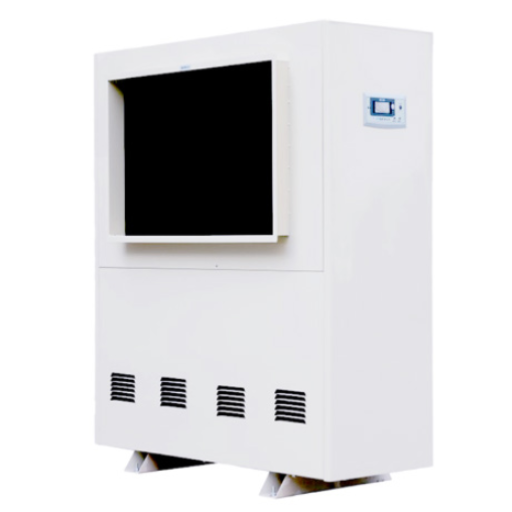
While determining the best dehumidifier with a pump, it is vital to consider the available space, the unit’s capacity, features, and the conditions present in the environment. Calculate the area’s square footage and analyze the moisture level to determine the appropriate pot capacity. In cases of large or very humid areas, a low-capacity unit won’t perform well, so make sure to choose a pump dehumidifier that’s high-capacity. Monitor other features like automatic drainage, adjustable humidity levels, and energy consumption ranks, which might be important to you. For users who are more concerned about ease of use and sound emission, giving preference to low-noise units will be best. Above all, though, the dehumidifier must have an efficient pump system, which provides the best convenience for your specific vertical or horizontal drainage requirements.
Definitions of pint capacity and room size and shape
Pint capacity is one of the predominant parameters in dehumidifiers, designating the quantity of humidity in the air that a unit is capable of extracting in a 24 hour period. Dehumidifier units with a capacity ranging between 20-30 pints usually is adequate for small spaces like bathrooms, closets, etc. Space such as bedrooms or living rooms with low to moderate humidity are classified as medium rooms and may require capacity units ranging between 30-50 pints. In contrast, highly moist areas such as basements or rooms with areas over 1,500 square feet would require units with a capacity over 50 pints, preferably 50-70 pints. It is necessary to correlate the size of the dehumidifier with the level of moisture available within the room to allow for efficiency and prevent the unit from working excessively or insufficiently. Also, environmental factors, in this case, if the unit is placed at a location susceptible to external sources of moisture, should also be considered. These technical details ensure that the moisture control is sustained and effective.
Evaluating ‘Energy Star’ Ratings for Efficacy
If you want an energy-efficient dehumidifier, purchasing one with an Energy Star rating is best. These models are designed to deliver optimal performance while consuming far less energy. Using modern innovations, Energy Star-certified dehumidifiers are designed to remove moisture with minimal energy expense and significantly reduce energy usage over time. Moreover, these units often have longer lifespans because they are built using more durable components. There is even added environmental bonus since these units are manufactured by strict guidelines to achieve the highest energy efficiency. Focusing primarily on a Better Energy dehumidifier increases efficiency and durability while saving money in the long run.
Assessing Drainage Systems and The Pump’s Power
While several options are available for drainage systems, the first thing to check is whether the system has a continuous option, or a built in pump with the dehumidifier. Continuous drainage allows the device to operate while a hose is used to pour out the water. Additionally, gravity-fed areas with no access to pumps can rely on built-in pumps that push water up or to the side, enabling the use of this feature in non-gravity areas. The distance or height the pump will transport water should be compatible with the layout of the intended space, making it just as important to consider as water’s final reservoir. The above aspects allow a user to increase the device’s effectiveness without emptying the reservoir consistently.
What maintenance is required for a dehumidifier with a built-in pump?
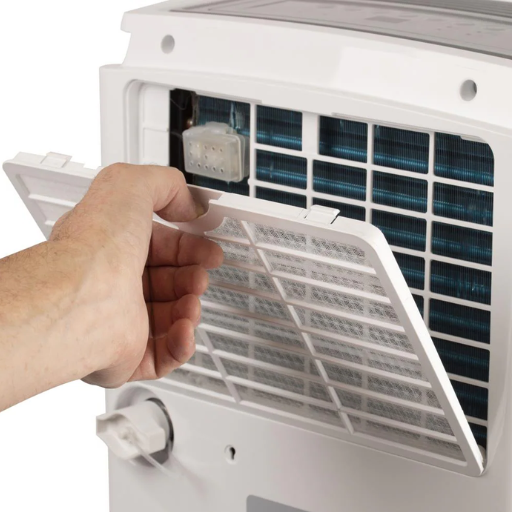
Integrating pump accessories to dehumidifiers has built-in maintenance and care steps crucial for its excellent performance and durability. The first thing to do is clean out or change the air conditioner filter because the efficiency and quality of air are greatly impaired with a clogged filter. Look at the drainage hose and clean it too. Blockages due to debris or other leftover materials tend to form in these places. Lastly, examine the pump to check if it has worn out or broken. If it has, this needs to have been changed. Ensure the pump cleans out all water from the system. Wash the water reservoir and clean the internal parts and components to where the electric circuits are fitted to the appliance to minimize mold and bacteria from growing inside. Also, check whether the dehumidifier is securely connected to the power source and that no wires are cut. Consistent cleaning helps prevent most of these issues with the dehumidifier.
Regular maintenance and changing of filters
Cleaning regularly means cleaning the outer surfaces and checking that the air intake and exhaust vents are free of dust buildups. In any case, the filter must be checked every 2-4 weeks dependent on the use and environmental surroundings. If the filter is reusable, it has to be washed with mild soap and water, dried completely, and then put back. If the filters shown in the manufacturer’s instructions are disposable, follow them so as to preserve airflow and effectiveness. This routine supports clogging control, enhances air conditions, and helps the dehumidifier perform adequately.
Correct Installation of the Always On Drainage System
To ensure appropriate installation of the continuous drain system, the first task is to ensure the dehumidifier is placed on a stable, flat surface close to a compatible drain or a floor drain. After that, identify the drain outlet which is usually available at the side or back of the unit and attach it to a garden hose or the hose supplied by the manufacturer. The hose or pipe must be firmly connected to the drain and sloped below it to allow water to flow freely without obstructions. Ensure that there are no kinks in the hose. To ensure future compatibility, the hose’s diameter should be 5/8 inch minimum. Confirm with the technical specifications of the unit to ensure. Always make sure that the drain endpoint is clear and can easily accept the drainage from the unit which may differ based on the output capacity of the unit (i.e., 50 pints per day or more for bigger units). Use the manual to inspect the hose and the connections regularly while working, provided the unit will not overflow or backup inside the system.
Troubleshooting common pump-related issues
Common pump-related problems associated with dehumidifiers can stem from insufficient water draining, excessive noise when draining the water or complete pump failure. If the water is not draining as intended, check the pump’s hose for clogs, knots, or its connection point. Loose, upwardly tilted hoses may result in poor drainage, so ensure that the hose is firmly affixed and slopes downwards. For excessive noise, examine whether the pump is clogged with dirt or is mounted on a vibrating surface. If the unit has stopped working altogether, check the power connection, clean it, and read the instructions to see if anything else needs to be done. With proper cleaning and inspection, there are a multitude of issues that can be avoided.
How does a dehumidifier with pump compare to other types of dehumidifiers?
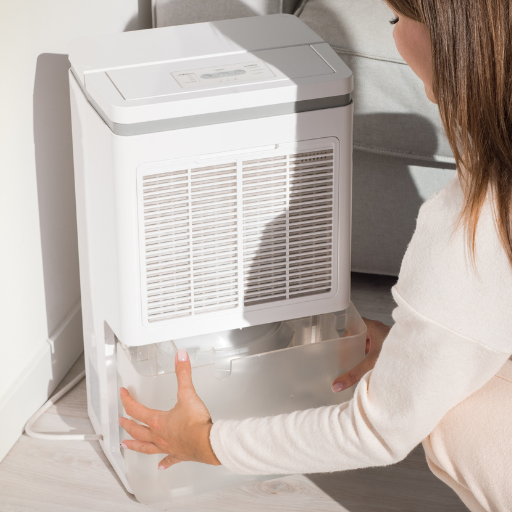
Dehumidifiers with pumps have unique benefits over traditional versions due to added convenience and efficiency when it comes to ridding of water. Units with built-in pumps have advantages over gravity-drain models as they actively push water to a designated discharge area. This feature allows for greater flexibility in placement, such as on uneven surfaces or in basements where the drain may not be at a practical height. These models are most suitable for continuous use as well as high-humidity environments. It also reduces the frequency of manually emptying the water tank. Additionally, they are ideal for situations where the drainage point is situated at a level higher than the dehumidifier itself. Models with pumps do, however, have some cons, such as a higher initial cost and sometimes maintenance of the pump.
Pump vs. gravity drain dehumidifiers
There is a major difference in the operation and application of pump dehumidifiers and those with a gravity drain. A pump system moves the condensation via a hose and permits the removal of drainage distance. This makes water movement considerably easier as one can simply drain it to a sink or an external drain. Therefore, such systems work best in places that have constrained gravity draining such as high basement or places that are high from the level of drainage. One of the advantages of a pump system is that it allows it to operate continuously while humid conditions are persistent, without having to keep emptying the device.
On the contrary, a gravity drain dehumidifier uses no power and relies on a hose with a water-connected drain. The attachments are located at a higher level than where the water drains. While cheaper and simpler in design, these types are limited in where they can be placed, as they need to be set in a suitable area to guarantee proper drainage.
Pump dehumidifiers are generally equipped with a special pump which can pump water vertically at a height of 10 to 15 feet. From a technical perspective, a pump is usually attached to a drainage hose with a diameter less than or equal to 0.5 inches, which requires specific pump flow rates for good performance. However, gravity drain models are more constrained by the setup because they depend on the hose’s steepness and length. Both types of systems should be properly maintained to allow for free draining and good operation, but the pump type may need more excellent maintenance due to the mechanical parts which are present.
Single Room vs. Throughout the House Dehumidifying Systems
Single room dehumidifying systems are mobile and adaptable to many different environments. These devices are small in size and can be moved easily from one room to another. Depending on the device, they have limited coverage and are recommended for use in areas between 300 to 600 square feet. The majority of portable devices are able to dehumidify spaces in the range of 20 to 70 pints per day. Most have integrated water tanks that need to be emptied manually regularly unless other draining options are available. Their power usage is quite diverse, but sizing and capacity means that the average consumption falls between 300 and 800 watts.
Unlike portable systems, whole-house static units are much larger, as they integrate with the central HVAC system of the house. These systems are ideal for handling large areas over 3,000-5,000 square feet. Compared to portable units, these systems often have a much larger dehumidification capacity, ranging from 70 to over 120 pints per day. Whole-house systems are more powerful and can simultaneously address multiple areas or even an entire house—certain factors like ductwork design, CFM, and the home’s overall insulation influence the units performance. The technology behind these systems makes use of large capacity compressors and fan systems, and as a result uses more energy compared to other systems, usually ranging from 800 to 1500 watts. However, these systems also come with energy-saving features that improve their efficiency in the long run.
Considering the differences between these two types of units, the choice depends mainly on the level of dehumidification needed, how much mobility matters, and the current setup of the house. Portables are more practical and cost-effective. However, whole-house systems are much more comprehensive and can automate moisture control without any manual interference.
Cost-effectiveness and long-term savings
Regarding cost-effectiveness and long-term savings, I always appreciate the solution that offers the greatest benefit concerning the initial outlay and operational costs. Appropriate forensic analysis helps establish that premium investment in quality energy-saving equipment and structures leads to lower utility bills and maintenance costs. Furthermore, investment in new versatile and robust solutions reduces the frequency of replacements, achieving savings during a product’s lifecycle and less resource wastage.
Reference sources
Frequently Asked Questions (FAQs)
Q: What is a dehumidifier with built-in pump and how does it work?
A: A dehumidifier with built-in pump is a device that removes excess moisture from the air and automatically pumps out the collected water. It works by drawing in humid air, cooling it to condense the moisture, and then reheating the air before releasing it back into the room. The built-in pump allows for continuous drainage, eliminating the need to empty the bucket when it’s full.
Q: What are the benefits of a 50 pint dehumidifier with pump?
A: A 50 pint dehumidifier with pump offers several advantages. It can remove up to 50 pints of moisture per day, making it suitable for large spaces or areas with high humidity. The built-in pump allows for hassle-free continuous drainage, even if the unit is located in a basement or crawl space where gravity drainage isn’t possible. Many 50-pint models are also Energy Star certified, ensuring efficient operation.
Q: How does a commercial dehumidifier with pump differ from a residential model?
A: Commercial dehumidifiers with pumps are designed for more demanding environments and typically offer higher capacity and durability compared to residential models. They often feature more powerful moisture removal capabilities, larger water tanks, and stronger pumps for efficient water drainage. Commercial units are ideal for warehouses, large basements, or industrial settings where maintaining precise humidity control is crucial.
Q: Can a portable dehumidifier be equipped with a built-in pump?
A: Yes, many portable dehumidifiers come with built-in pumps. These units combine the convenience of mobility with the added benefit of automatic water removal. Portable dehumidifiers with pumps are particularly useful in situations where you need to move the unit between rooms or don’t have a suitable gravity drain nearby.
Q: How does the drain hose function in a dehumidifier with a pump?
A: The drain hose in a dehumidifier with a pump allows for continuous water drainage. The built-in pump pushes the collected water through the hose, which can be directed to a sink, floor drain, or even outdoors. This eliminates the need to manually empty the water bucket and allows the dehumidifier to operate continuously, even when placed in areas where gravity drainage isn’t feasible.
Q: Are there Energy Star dehumidifiers with built-in pumps available?
A: Yes, there are Energy Star dehumidifiers with built-in pumps available in the market. These models meet strict energy efficiency guidelines set by the U.S. Environmental Protection Agency and the U.S. Department of Energy. They offer the convenience of a built-in pump while consuming less energy, which can lead to lower operating costs and reduced environmental impact.
Q: How do I choose the right pint dehumidifier with pump for my needs?
A: To choose the right pint dehumidifier with pump, consider the size of the space, the humidity level, and your specific requirements. For most residential applications, a 50-pint dehumidifier is suitable for medium to large rooms or basements. Consider factors like Energy Star certification for energy efficiency, noise levels, and additional features such as digital controls or washable filters.
Q: What maintenance is required for a dehumidifier with a built-in pump?
A: Maintenance for a dehumidifier with a built-in pump typically includes cleaning or replacing the air filter regularly, checking and cleaning the pump and hose to prevent clogs, and occasionally cleaning the water bucket and coils. Some models feature washable filters for easy maintenance. It’s also important to ensure the drain hose is properly positioned and free from kinks or blockages to maintain efficient operation.



